-
 Bitcoin
Bitcoin $118300
1.01% -
 Ethereum
Ethereum $4215
0.69% -
 XRP
XRP $3.198
-3.83% -
 Tether USDt
Tether USDt $1.000
-0.01% -
 BNB
BNB $803.4
-0.53% -
 Solana
Solana $180.3
-0.67% -
 USDC
USDC $0.9998
-0.01% -
 Dogecoin
Dogecoin $0.2334
-1.49% -
 TRON
TRON $0.3394
0.86% -
 Cardano
Cardano $0.7980
-1.45% -
 Chainlink
Chainlink $22.19
6.65% -
 Hyperliquid
Hyperliquid $43.41
0.13% -
 Stellar
Stellar $0.4407
-3.13% -
 Sui
Sui $3.843
-2.24% -
 Bitcoin Cash
Bitcoin Cash $564.7
-3.74% -
 Hedera
Hedera $0.2588
-3.41% -
 Ethena USDe
Ethena USDe $1.001
0.00% -
 Avalanche
Avalanche $23.64
-3.37% -
 Litecoin
Litecoin $120.0
-4.01% -
 Toncoin
Toncoin $3.342
-1.11% -
 UNUS SED LEO
UNUS SED LEO $9.038
0.60% -
 Shiba Inu
Shiba Inu $0.00001347
-0.81% -
 Uniswap
Uniswap $10.69
-4.58% -
 Polkadot
Polkadot $4.034
-1.30% -
 Dai
Dai $1.000
0.01% -
 Bitget Token
Bitget Token $4.472
-1.52% -
 Cronos
Cronos $0.1571
-3.04% -
 Pepe
Pepe $0.00001207
-2.21% -
 Monero
Monero $273.8
-3.19% -
 Ethena
Ethena $0.7520
2.75%
Will the price of USDT fluctuate? Why is it called a stablecoin?
USDT, designed to be a stablecoin, can fluctuate due to market demand, liquidity issues, and trust in Tether's reserves, despite its $1 peg.
May 12, 2025 at 03:10 am
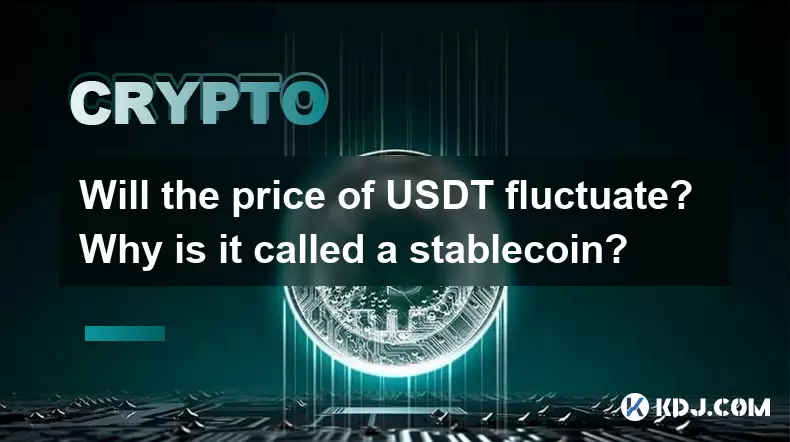
The cryptocurrency market is known for its volatility, with prices of various digital assets fluctuating wildly. However, there exists a category of cryptocurrencies known as stablecoins, designed to maintain a stable value. One of the most popular stablecoins is Tether (USDT). In this article, we will explore whether the price of USDT can fluctuate and why it is referred to as a stablecoin.
What is USDT?
USDT, also known as Tether, is a type of cryptocurrency known as a stablecoin. It is designed to maintain a stable value by being pegged to a fiat currency, most commonly the US dollar. The idea behind USDT is to provide a digital asset that combines the benefits of cryptocurrencies, such as fast and borderless transactions, with the stability of traditional currencies.
Why is USDT Called a Stablecoin?
The term stablecoin refers to a cryptocurrency that is designed to minimize the volatility typically associated with other digital assets. USDT achieves this stability by being pegged to the US dollar at a 1:1 ratio. This means that for every USDT in circulation, Tether Ltd., the company behind USDT, claims to hold an equivalent amount of US dollars in reserve. This pegging mechanism is intended to ensure that the value of USDT remains constant relative to the US dollar.
How Does USDT Maintain Its Peg?
To maintain its peg to the US dollar, USDT relies on a combination of reserve backing and market mechanisms. Tether Ltd. claims to hold reserves in the form of cash, cash equivalents, and other assets that are supposed to match the total supply of USDT. Additionally, market forces help to keep the price stable. If the price of USDT deviates from its peg, traders can arbitrage the difference, buying or selling USDT to bring its price back to $1.
Can the Price of USDT Fluctuate?
While USDT is designed to be a stablecoin, its price can indeed fluctuate. Although these fluctuations are usually minimal compared to other cryptocurrencies, there have been instances where USDT's price has deviated from its intended $1 peg. Several factors can contribute to these fluctuations:
- Market Demand and Supply: If there is a sudden increase in demand for USDT, its price might temporarily rise above $1. Conversely, if there is a surplus of USDT in the market, its price could fall below $1.
- Liquidity Issues: In times of high market volatility or during significant events, liquidity can become a concern. If there are not enough buyers or sellers to maintain the peg, the price of USDT can deviate.
- Trust and Confidence: The stability of USDT also depends on the trust and confidence of its users. If there are concerns about the adequacy of Tether's reserves or the transparency of their operations, it can lead to price fluctuations.
Historical Instances of USDT Price Fluctuations
There have been several notable instances where the price of USDT has deviated from its $1 peg. For example, in October 2018, USDT briefly traded below $0.90 on some exchanges due to concerns about Tether's reserve backing. Similarly, in March 2020, during the cryptocurrency market crash triggered by the global economic uncertainty due to the COVID-19 pandemic, USDT's price briefly dipped below $0.95. These events highlight that while USDT aims to be a stablecoin, it is not immune to price fluctuations.
Mechanisms to Minimize Fluctuations
To minimize these fluctuations, Tether Ltd. employs several strategies. They regularly publish attestations from independent auditors to verify the reserves backing USDT. Additionally, Tether has introduced new versions of USDT, such as USDT on the Ethereum blockchain (ERC-20), which offer increased transparency and security. These measures are intended to bolster trust and confidence in the stability of USDT.
The Role of USDT in the Cryptocurrency Ecosystem
USDT plays a crucial role in the broader cryptocurrency ecosystem. It serves as a bridge between the volatile world of cryptocurrencies and the stable world of fiat currencies. Traders often use USDT to move funds in and out of the crypto market without converting to traditional currencies. This utility enhances the liquidity and efficiency of cryptocurrency trading platforms.
Factors Influencing USDT's Stability
Several factors influence the stability of USDT. These include:
- Regulatory Environment: Changes in regulations regarding cryptocurrencies and stablecoins can impact the stability of USDT. For instance, if regulators impose stricter reserve requirements, it could affect Tether's ability to maintain its peg.
- Transparency and Audits: Regular and transparent audits of Tether's reserves are crucial for maintaining user trust. Any perceived lack of transparency can lead to fluctuations in USDT's price.
- Market Sentiment: The overall sentiment in the cryptocurrency market can also affect USDT's stability. During times of high market stress, investors may question the reliability of USDT, leading to price deviations.
Conclusion
While USDT is designed to be a stablecoin and is generally successful in maintaining its peg to the US dollar, it is not immune to price fluctuations. These fluctuations, although typically minimal, can occur due to various factors such as market demand and supply, liquidity issues, and trust in Tether's reserve backing. Understanding these dynamics is essential for anyone using USDT in the cryptocurrency ecosystem.
Frequently Asked Questions
Q: How does USDT compare to other stablecoins like USDC and DAI?
A: USDT, USDC, and DAI are all stablecoins, but they differ in their backing mechanisms and governance. USDT is backed by Tether Ltd. and claims to be fully collateralized by US dollars. USDC, issued by Circle and Coinbase, is also fully backed by US dollars and undergoes regular audits for transparency. DAI, on the other hand, is a decentralized stablecoin governed by the MakerDAO protocol and is backed by a mix of cryptocurrencies held in collateral.
Q: Can I use USDT for everyday transactions?
A: Yes, USDT can be used for everyday transactions, especially in regions where cryptocurrencies are widely accepted. However, its acceptance varies by merchant and platform. It is primarily used within the cryptocurrency ecosystem for trading and as a means to move funds between different digital assets.
Q: What happens if Tether Ltd. fails to maintain the peg?
A: If Tether Ltd. fails to maintain the peg, the value of USDT could deviate significantly from $1, leading to potential losses for holders. In such a scenario, the market would likely see increased volatility, and users might lose confidence in USDT. Regulatory actions or interventions could also follow to address the issue.
Q: How can I buy and store USDT?
A: To buy and store USDT, follow these steps:
- Choose a Cryptocurrency Exchange: Select a reputable exchange that supports USDT, such as Binance, Coinbase, or Kraken.
- Create an Account: Sign up for an account on the chosen exchange and complete the necessary verification processes.
- Deposit Funds: Deposit fiat currency or another cryptocurrency into your exchange account.
- Buy USDT: Navigate to the trading section of the exchange and execute a trade to buy USDT with your deposited funds.
- Withdraw USDT: Once you have purchased USDT, you can withdraw it to a personal wallet for storage.
- Store USDT: Use a secure wallet that supports USDT, such as a hardware wallet like Ledger or a software wallet like MetaMask. Ensure you follow best practices for securing your wallet, including enabling two-factor authentication and backing up your recovery phrase.
Disclaimer:info@kdj.com
The information provided is not trading advice. kdj.com does not assume any responsibility for any investments made based on the information provided in this article. Cryptocurrencies are highly volatile and it is highly recommended that you invest with caution after thorough research!
If you believe that the content used on this website infringes your copyright, please contact us immediately (info@kdj.com) and we will delete it promptly.
- Gemini AI's Crypto Crystal Ball: Predicting 1000x Gains with Meme Coins?
- 2025-08-11 02:50:12
- Cold Wallet Crypto Presale: Your Price Edge in the Wild West of Crypto
- 2025-08-11 02:50:12
- Lil Pepe: The Undervalued Meme Coin Set to Explode in 2025?
- 2025-08-11 02:30:12
- MoonBull, Crypto Trends, and Meme Culture: Navigating the Hype in 2025
- 2025-08-11 02:30:12
- BlockchainFX, Crypto Presale, Bitcoin Hyper: The NY Perspective on 2025's Hottest Crypto
- 2025-08-11 01:10:14
- Cold Wallet, Crypto Presales, and ROI Potential: A New Yorker's Take
- 2025-08-11 01:10:14
Related knowledge
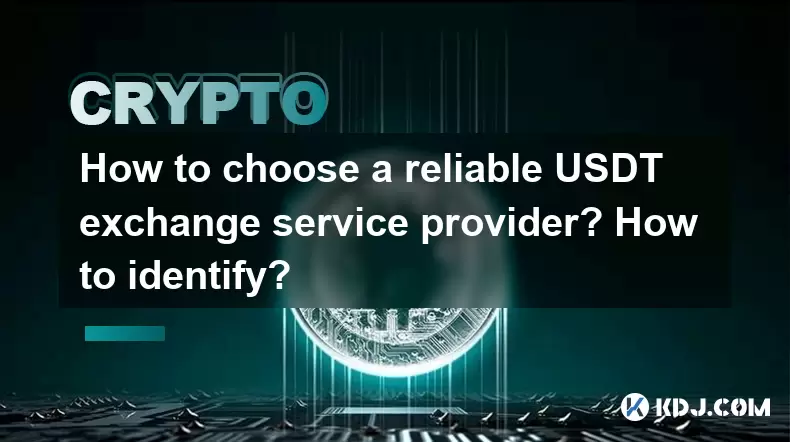
How to choose a reliable USDT exchange service provider? How to identify?
Jun 12,2025 at 03:15pm
Understanding the Role of USDT in Cryptocurrency TradingUSDT (Tether) is one of the most widely used stablecoins in the cryptocurrency market. It is d...
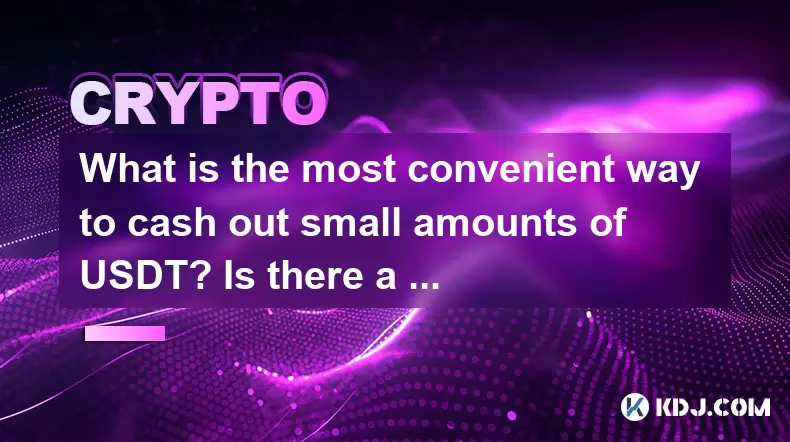
What is the most convenient way to cash out small amounts of USDT? Is there a shortcut?
Jun 11,2025 at 11:00pm
Understanding the Need to Cash Out Small USDT AmountsCashing out small amounts of USDT can be a challenge for many crypto users. Traditional methods o...
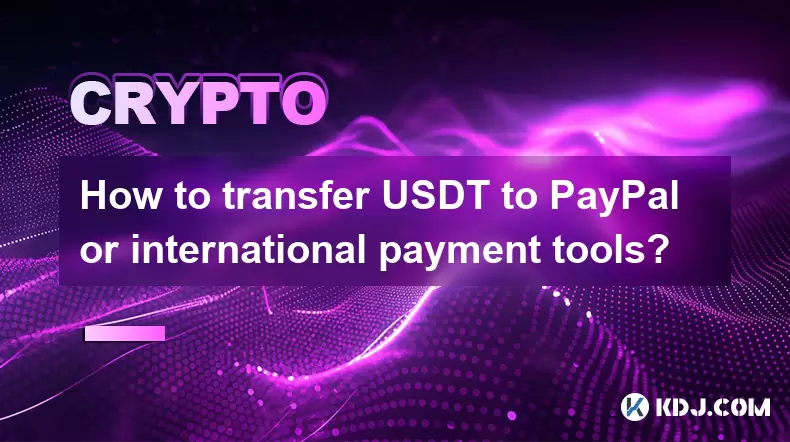
How to transfer USDT to PayPal or international payment tools?
Jun 15,2025 at 05:28am
Understanding the Basics of USDT and PayPal IntegrationUSDT (Tether) is a stablecoin pegged to the US dollar, offering blockchain-based value transfer...
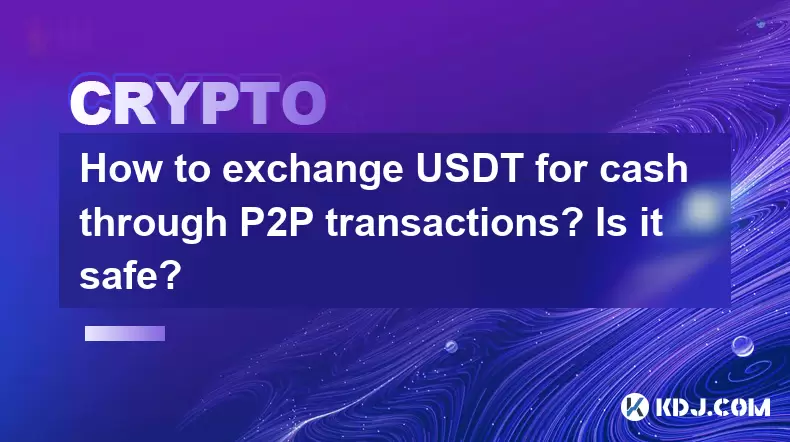
How to exchange USDT for cash through P2P transactions? Is it safe?
Jun 18,2025 at 07:56am
Understanding USDT and P2P TransactionsTether (USDT) is a stablecoin pegged to the value of the US dollar, making it a popular choice for users who wa...
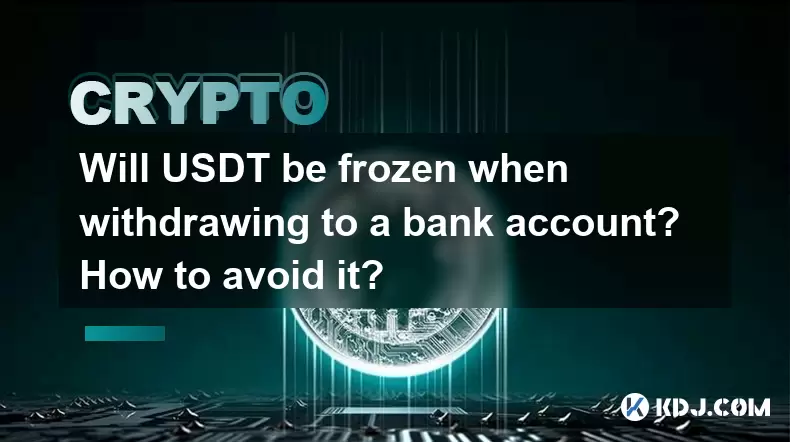
Will USDT be frozen when withdrawing to a bank account? How to avoid it?
Jun 15,2025 at 10:03am
Understanding USDT Withdrawals and Bank Account Freezing RisksWhen users decide to withdraw USDT (Tether) to a bank account, one of the most common co...
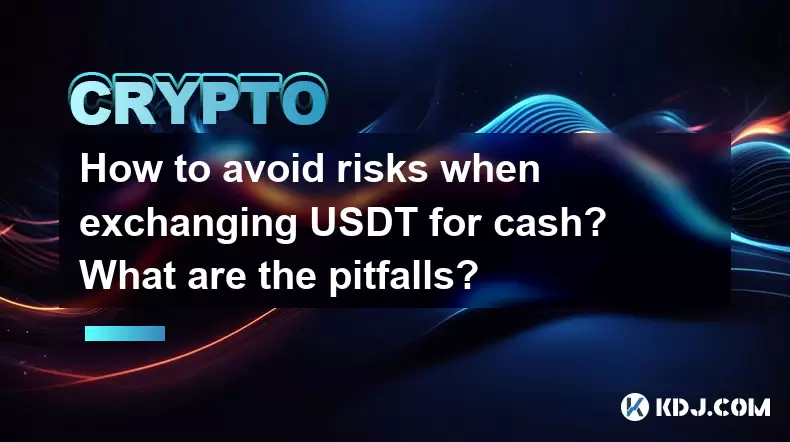
How to avoid risks when exchanging USDT for cash? What are the pitfalls?
Jun 11,2025 at 08:14pm
Understanding the Risks of Exchanging USDT for CashWhen exchanging USDT (Tether) for cash, users must be aware of the potential risks involved. As a s...

How to choose a reliable USDT exchange service provider? How to identify?
Jun 12,2025 at 03:15pm
Understanding the Role of USDT in Cryptocurrency TradingUSDT (Tether) is one of the most widely used stablecoins in the cryptocurrency market. It is d...

What is the most convenient way to cash out small amounts of USDT? Is there a shortcut?
Jun 11,2025 at 11:00pm
Understanding the Need to Cash Out Small USDT AmountsCashing out small amounts of USDT can be a challenge for many crypto users. Traditional methods o...

How to transfer USDT to PayPal or international payment tools?
Jun 15,2025 at 05:28am
Understanding the Basics of USDT and PayPal IntegrationUSDT (Tether) is a stablecoin pegged to the US dollar, offering blockchain-based value transfer...

How to exchange USDT for cash through P2P transactions? Is it safe?
Jun 18,2025 at 07:56am
Understanding USDT and P2P TransactionsTether (USDT) is a stablecoin pegged to the value of the US dollar, making it a popular choice for users who wa...

Will USDT be frozen when withdrawing to a bank account? How to avoid it?
Jun 15,2025 at 10:03am
Understanding USDT Withdrawals and Bank Account Freezing RisksWhen users decide to withdraw USDT (Tether) to a bank account, one of the most common co...

How to avoid risks when exchanging USDT for cash? What are the pitfalls?
Jun 11,2025 at 08:14pm
Understanding the Risks of Exchanging USDT for CashWhen exchanging USDT (Tether) for cash, users must be aware of the potential risks involved. As a s...
See all articles

























































































